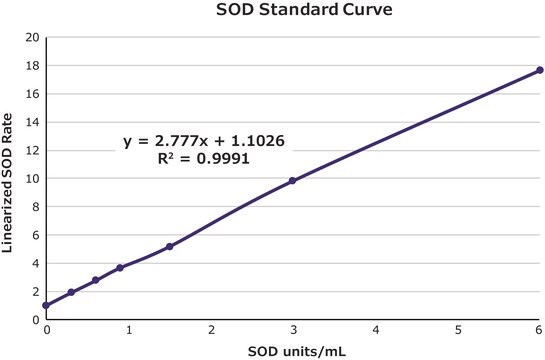MAK085
Lipid Peroxidation (MDA) Assay Kit
sufficient for 100 colorimetric or fluorometric tests
Synonym(s):
MDA Assay, TBARS Assay, Thiobarbituric Acid Reactive Substances Assay
About This Item
Recommended Products
usage
sufficient for 100 colorimetric or fluorometric tests
drug control
regulated under CDSA - not available from Sigma-Aldrich Canada
detection method
colorimetric
fluorometric
relevant disease(s)
endocrinological disorders, diabetes; neurological disorders; cancer; cardiovascular diseases
storage temp.
−20°C
General description
Application
Suitability
Principle
related product
Signal Word
Danger
Hazard Statements
Precautionary Statements
Hazard Classifications
Acute Tox. 4 Oral - Aquatic Chronic 2 - Eye Dam. 1 - Flam. Liq. 2 - Skin Corr. 1C
Storage Class Code
3 - Flammable liquids
Flash Point(F)
57.2 °F - closed cup
Flash Point(C)
14 °C - closed cup
Choose from one of the most recent versions:
Certificates of Analysis (COA)
Don't see the Right Version?
If you require a particular version, you can look up a specific certificate by the Lot or Batch number.
Already Own This Product?
Find documentation for the products that you have recently purchased in the Document Library.
Customers Also Viewed
Our team of scientists has experience in all areas of research including Life Science, Material Science, Chemical Synthesis, Chromatography, Analytical and many others.
Contact Technical Service




